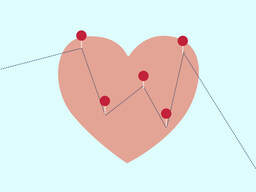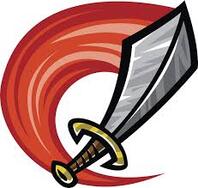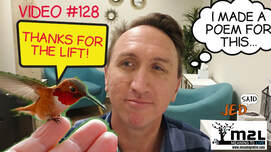 How deep is your connection with your significant other? The answer lies in how well you know them. Love maps are a great place to start building and even re-building a connection in any relationship. This article will focus creating a healthy romantic bond but you can also use this technique with your family and kids. Let’s talk “love maps”. They’re not so difficult to explain; if a map gives you the ability to navigate the globe, a “love map” provides you with the means to navigate a shared life. The term was coined by Dr. Gottman and it’s good you know it because love maps can make - or break - a relationship. Why are love maps so important? Relationships are about not only connecting with someone, but also staying connected and it isn’t as easy as you’d think. Being human means our likes and interests change over time and if we don’t want to drift apart, we need to stay in the know. Being constantly curious about who we’re with is a great way of being connected...otherwise, years into the relationship, you may wake up next to a stranger. To discover your partner's map, you simply need to know things about them. The questions will range in intimacy and are meant to help you connect and understand each other. Remember, it’s best to build on a good foundation of knowledge so...know the easy answers before jumping into the deep end. Here are a few questions to get your started.
Emotional intimacy is an important part of feeling love. And to keep the love alive, it’s recommended that you build on your love map often; every week. Keep in mind that maintaining a healthy relationship is a marathon, not a sprint. The best news of all is, believe it or not, love doesn’t have to get boring or old. With love maps, love and connection can deepen and grow over time. Thanks for taking the time to read and you’ll find it at www.meaningtolive.com And until next time, awareness up. Jed Thorpe, CMHC
0 Comments
 People naturally bond or connect with other people. This happens with close acquaintances, family, lovers, co-workers, etc. Fortunately, there are exceptions to whom we create bonds with - otherwise, we'd have much stronger emotional reactions to random people we meet in life. For a genuine bond to take place, we need to have some desire to connect with or gain acceptance from the other person. A bond is different from a connection. Connections happen like courtesy nods or hand shakes. Bonds are deeper, stickier and once established, they can be difficult to shake. When you think “trauma bond” think of 2 things; cognitive dissonance and the chemical "oxytocin". Cognitive dissonance is the psychological component and it happens inside our heads when we try to carry two opposing beliefs about something (or in this case, someone). Turned inward, cognitive dissonance is felt when our values don't align with our thoughts. It's uncomfortable thinking about murdering someone when you think of yourself as a good person and believe a good person doesn't go around killing people. Cognitive dissonance turned outward happens when one person in your life plays a duel role of being good and bad. Having two opposing belief systems bouncing about causes dissonance. Our brains like things to be explainable and get backed up when someone we're bonded with behaves like the good Dr. Jekyll one day and the horrible Mr. Hyde the next. This is cognitive dissonance and to relieve the pressure, you’ll choose a side...Dr. Jekyll. Why? Because the thought of losing that bond is too painful to bear and with that, you're stuck. The trauma comes into play when we are hurt over and over - and over by the person we're bonded with. Your bonded in trauma. Next comes the second component and for that, it’s all about chemicals - specifically, oxytocin. This sweet little bugger of a hormone is produced in the hypothalamus IN ORDER TO CONNECT. Let me say that again; as humans we wouldn’t be able to emotionally connect if it weren’t for this lovely chemical and it gets even better - the strength of the bond is correlated to the level of oxytocin produced! A low level of oxytocin release means it's easier to break the bond (and visa versa). And there’s more; turns out this chemical doesn’t care about the difference between healthy vs. unhealthy connection. It’s job is simply - to - connect. This is a bit of a 2-edged sword in that bonding can be extremely pleasant OR it can be extremely traumatic. The latter scenario (trauma) is where the term “trauma bond” is explained. Here are 7 identifiers of being under the influence of a Trauma Bond.
How does one break the bond? It’s easier said than done because any connection with them only brings more bonding. Oxytocin is going to do its job whether you like it or not and will always be a 2-edged sword. So, if you don’t want to get cut by a reposte, stay out of the weapons reach! If possible, RIP THE BANDAID OFF! ABORT! RUN! JUMP OFF THE TRAIN! FLEE! If that’s not possible, create boundaries that limit your exposure. Less exposure, less chemicals, less bond. A hummingbird once fell out of the sky
"I'm no good at birding", he said with a sigh "Will you help me to learn? I promise I'll try" "Oh, please help me, please! I don't want to die" So we picked up the creature from off of the ground And made it a home that was perfectly sound Then fashioned a feeder with a syringe we'd found Oh, I hope this weak, shaky thing comes around And come around it...kinda did. It stopped shaking and seemed to get quite lucid But the growth didn't last for the little bird kid Oh, how it got worse as he slid and he slid We didn't understand, it was all right there The bird had not for want and care Yet there it was dying, seemingly unaware Oh, how could this happen? Life just wasn't fair So we doubled our effort and then we gave more More money, more goodies, HIS own private door We fought every battle for whom we adored Oh, hummingbird remember how you flew before?! Days turned to weeks turned to months and to years The little bird learned to reduce us to tears He pushed all our buttons and played on our fears Oh, how some things are never as they appear For this bird was a man now with hair on his face He'd stalled out, of course, in the human-bird race And would eventually fade in silent disgrace But do not feel bad for he had OUR embrace He had OUR attention in every endeavor WE were beside him to guide him, our treasure For years we enjoyed him, this BIRDLING, so clever Till the loss - so great, we'd bury the ledger A word of warning to hummingbirds, all That, WHEN in FLIGHT, you head-butt a wall Get up on your own, there is no worse fall Than a life made too easy no one will recall Jed Thorpe, October 2020 |
Archives
June 2024
|
Proudly powered by Weebly

 RSS Feed
RSS Feed